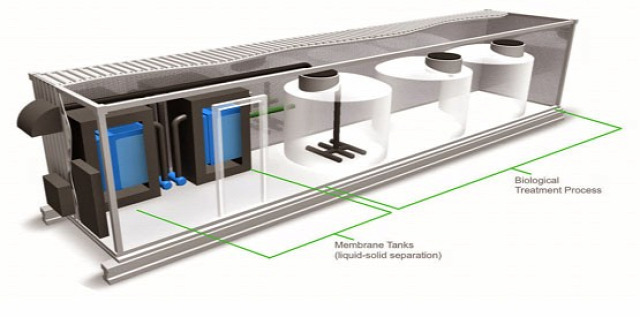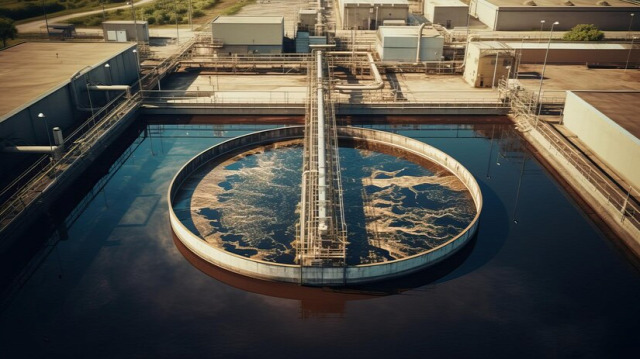 Sewage treatment plants for domestic areas are very important for keeping the environment clean and healthy. The goal of these systems is to clean up garbage from homes before it is dumped back into the environment. Homeowners and businesses alike need to know about the most important parts of an effective domestic sewage treatment plant. Let’s study these features in detail, highlighting their importance with real-life examples.
Sewage treatment plants for domestic areas are very important for keeping the environment clean and healthy. The goal of these systems is to clean up garbage from homes before it is dumped back into the environment. Homeowners and businesses alike need to know about the most important parts of an effective domestic sewage treatment plant. Let’s study these features in detail, highlighting their importance with real-life examples.
What is a Domestic Sewage Treatment Plant?
A domestic sewage treatment plant (DSTP) is a building that processes wastewater from homes. This includes water from toilets, sinks, showers, and washing machines. The goal is to get rid of harmful contaminants and make clean water that can be used or put back into the environment safely.
Why Are Domestic Sewage Treatment Plants Important?
- Protecting Public Health: Pathogens in wastewater can cause diseases, but they can't spread if the sewage is properly treated.
- Environmental Conservation: By treating sewage, we reduce pollution in rivers, lakes, and groundwater, preserving ecosystems.
- Resource Recovery: Many sewage treatment plants can recycle water and make biogas, promoting sustainable practices.
Top Features of Efficient Domestic Sewage Treatment Systems
- Cutting-edge technology for filtering
Efficient domestic sewage treatment plants utilize advanced filtration technologies to remove solids and contaminants. This includes:
- Membrane filtration: To separate impurities from water, this method uses membranes that let some things through but not others. It’s effective in removing germs and viruses, ensuring high-quality effluent.
Example: A residential community in California installed a membrane bioreactor system, significantly improving water quality and allowing for the reuse of treated water for irrigation.
- Biological Treatment Processes
To break down the organic matter in sewage, biological treatment is very important. This is typically done using bacteria that thrive on the organic waste present in wastewater.
- Activated Sludge Process: This method aerates the wastewater, encouraging bacteria to consume organic materials.
- Biofilm Systems: To effectively treat wastewater, these systems use bacteria that stick to surfaces.
Example: A small village in the UK installed an activated sludge system, which cleaned up the sewage quickly and cut down on smells that were bothering people.
- Energy Efficiency
Modern domestic sewage treatment plants are built with energy efficiency in mind. This keeps operating costs low and lessens the damage the treatment process does to the earth.
- Energy Recovery Systems: Some plants take the biogas that is made during treatment and turn it into electricity that powers the plant or even homes nearby.
Example: A wastewater treatment plant in Germany implemented an energy recovery system that now powers 70% of its operations, showcasing sustainability in action.

- Compact Design
Efficient domestic sewage treatment plants are often designed to be compact, making them ideal for residential areas with limited space. It's especially important to do this in cities where room is limited.
- Modular Systems: These systems can be easily expanded or modified as needed, making them flexible for various applications.
Example: For example, a modular sewage treatment plant was put in place at a new apartment complex in Singapore. It works well with the limited space and meets the needs of the residents.
- Smart Monitoring Systems
As technology has improved, many sewage treatment plants for homes now have smart tracking systems. These systems use sensors and IoT technology to track performance and detect issues in real time.
- Automated Alerts: If a problem appears, like a slowdown in treatment, the system can send alerts to operators so that the problem can be fixed quickly.
Example: An Australian suburb put smart monitoring in its sewage treatment plant so that any problems could be fixed right away. This made sure that the level of treatment was always the same.
- User-Friendly Interfaces
Modern sewage treatment systems often have easy-to-use controls that make it simple for homeowners to keep an eye on how well the system is working. This makes sure that users can take care of maintenance and fix issues on their own.
- Mobile Apps: Some systems offer mobile applications that provide real-time info, alerts, and maintenance reminders.
Example: An eco-friendly housing development in Canada offers a mobile app for residents to track their sewage treatment plant’s performance, making it easy to stay informed and engaged.
- Following rules and regulations
Efficient domestic sewage treatment plants are made to meet or exceed local and national regulations. Compliance makes sure that treated wastewater is safe to release or use again.
- Regular Testing: A lot of systems have ways to make sure that the quality of the sewage is tested regularly to make sure it meets standards.
Example: In India, a rural community built a sewage treatment plant that not only follows local rules but also puts out regular reports on the quality of the effluent, which helps residents trust the facility.
- Low Maintenance Requirements
Being efficient also means that it doesn't need much upkeep. A well-designed domestic sewage treatment plant should minimize the need for frequent servicing.

- Durable Materials: Using high-quality materials can reduce wear and tear, leading to lower maintenance costs.
Example: There is a family-owned farm in Texas that put in a long-lasting sewage treatment system that hasn't needed much upkeep, so the owners can focus on farming.
- Environmental Benefit
Effective sewage treatment plants for homes are good for the environment because they lower pollution and help resources get back to where they belong.
- Nutrient Recovery: Some systems can get nutrients out of wastewater so that they can be used as fertilizer in gardens.
Example: An urban garden in New York City gets its water from a nearby sewage treatment plant and uses it to water the plants. This is an example of a sustainable cycle of water use.
- Community Awareness and Engagement
An efficient domestic sewage treatment plant should also promote community knowledge and engagement. Teaching people about how important it is to treat garbage makes them more responsible.
- Workshops and information sessions: A lot of places hold events to teach people about how to clean sewage and save water.
Example: A community in Florida regularly organizes workshops on Wastewater Treatment Plants, helping residents understand how their actions can impact the efficiency of the system.
In Conclusion
In summary, domestic sewage treatment plants are essential for maintaining a clean and healthy environment. Their efficient features, such as advanced filtration, biological treatment processes, energy efficiency, and smart monitoring systems, ensure that wastewater is treated effectively.
These systems protect public health and the environment but also promote sustainability through resource recovery. Whether in urban or rural settings, efficient domestic sewage treatment plants play a vital role in our communities. As a company that sells wastewater treatment plants, as effluent treatment plants, we know how important these systems are and are dedicated to meeting the needs of both businesses and people. Together, we can ensure a cleaner, safer future for everyone.

